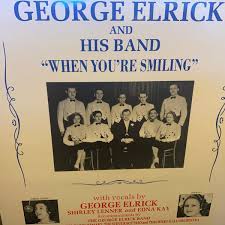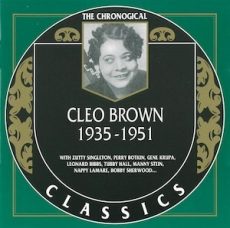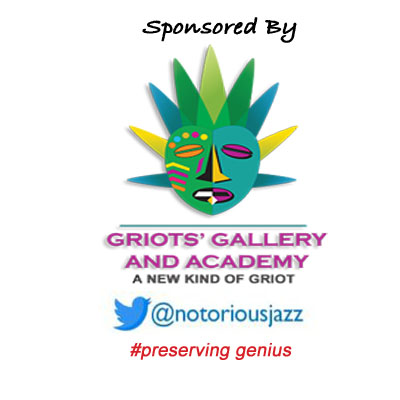
Daily Dose Of Jazz…
Holly Cole was born November 25, 1963 in Halifax, Nova Scotia, Canada to a noted radio broadcasting father on the CBC Stereo network. Seeking a musical career, in 1983 she travelled to Toronto, Canada and three years later she founded a trio with bassist David Piltch and pianist Aaron Davis. It took two more years to get offered a record deal and in 1989 the Holly Cole Trio released an EP, Christmas Blues. The following year she released her debut album Girl Talk.
A succession of releases followed through the early 1990s covering r&b, blues, rock, country and show tunes with a jazz arrangement. In 1993 Holly’s hit single cover version of the Johnny Nash song I Can See Clearly Now earned a Juno Award nomination for Best Video and won a Juno Award for Best Contemporary Jazz Album, in 1994.
During the Nineties decade she appeared in film and television, releasing a track on the soundtrack of the Due South series. From 1993 to 1998 she recorded and released an album a year, took a break from recording, coming back in 2000 and recorded four more albums until 2007. In 2010, Cole contributed a track for the World Jazz For Haiti charity album.
In 2012 she got her original band back together again, added John Johnson on horns, guitarist Rob Piltch, Davide DiRenzo on drums and recorded a live album and dvd. She has been featured in several music specials which have rendered her multiple awards.
Vocalist Holly Cole, who has released 17 albums and received an honorary degree from Queen’s University in Kingston, Ontario, Canada, continues to perform and record.
More Posts: bandleader,history,instrumental,jazz,music,vocal

Daily Dose Of Jazz…
George Connell Elrick was born on December 29, 1903 in Aberdeen, Scotland. His first ambition was to be a doctor but financial constraints prevented this. Still in his teens, he began playing drums for local dance bands and by 1928 had formed his own band, the Embassy Band. The group swept the prizes in the All-Scottish Dance Band Championship that year.
Turning professional, George moved to London, England where he became friends with the crooner Al Bowlly, and began singing himself. He joined the Henry Hall Orchestra as a vocalist and drummer and their 1936 recording of The Music Goes Round and Round made him a star. Leaving Hall in 1937 he formed his own band, and two years later began his solo career, which was moderately successful through the years of World War II.
In 1948, he took a touring revue around Britain, and was asked by the BBC to stand in for two weeks as disc-jockey on the morning record request show Housewives’ Choice. The temporary job lasted almost twenty years, as his Scottish accent and liberal use of catchphrases became highly popular.
In later years, he became something of an impresario and acted as an agent for numerous musicians such as Mantovani. He was a member of the Grand Order of Water Rats, and was also a life member of the Variety Club of Great Britain.
Drummer George Elrick, who published his autobiography titled Housewives’ Choice: The George Elrick Story, died on December 15, 1999.
More Posts: bandleader,drums,instrumental,jazz,music,vocals

Daily Dose Of Jazz…
Judi Marie Canterino was born on December 18, 1942 in New York City, New York. She began her musical training at the age of seven with classical piano and performed at the Juilliard School of Music through her thirteenth year. Then she turned her studies to voice, training classically through high school.
At 19 she turned her attention to jazz singing and was introduced to Lennie Tristano, with whom she began studying. As part of my jazz training, she would listen to Lennie Tristano perform at the Half Note. Early in her career she sat-in at the club with Zoot Sims, Al Cohen, Wes Montgomery, Buddy Tate, Bud Johnson, Jimmy Rushing, Van Dickenson, Major Holly, Milt Hinten, Doc Cheatham, Roy Eldridge, Ross Thompkins, Bobby Hackett and others.
Her style came from mentorship of those previously mentioned and the influences of singers Jimmy Rushing, Billie Holiday, Maxine Sullivan, Rosemary Clooney, Anita O’Day and Frank Sinatra. She took time off from performing to raise a family but remained active in the jazz world, resuming her career with guitarist Joe Puma. She’s appeared around New York and New Jersey.
I have been working with jazz greats Warren Vache, Scott Hamilton, Norman Simmons, Chuck Folds, Clark Terry, Mark Shane, Rio Clemente, Joe Cocuzzo, Phil Bodner, Spanky Davis, Bucky Pizzarelli, Kenny Daverne, Kenny Asher and before their deaths, the great Doc Cheatham and Red Richards.
Her debut as a leader was titled Gee Baby and her sophomore project is Live At Maureen’s jazz Cellar. Vocalist Judi Marie Canterino, the Swing Jazz Singer, is still taking the stage to this day.
More Posts: bandleader,history,instrumental,jazz,music,vocal

Daily Dose Of Jazz…
Jeremy Bacon was born in New York City, New York on December 16, 1959 into a musical family that were big jazz fans. His father sang with the New York Choral Society and The Occasional Singers, an avant-garde group led by folk singer Gil Robbins. Her uncle designed album covers for Thelonious Monk, Cannonball Adderley and numerous others for Riverside Records.
Taking piano lessons as a child he went on to study in high school at the Center for Open Education and then jazz improvisation and composition at Oberlin. After college, Jeremy became the protégé of pianist Don Pullen. He worked regularly in a trio led by bassist Charles Fambrough, which rotated drummer Jeff “Tain” Watts, trumpeters Johnny Coles and Michael Philip Mossman, saxophonists Joe Ford and Ralph Bowen, and guitarist Pat Martino.
He was musical director for Joey Arias’ Billie Holiday show at Carnegie Hall and accompanied many vocalists, including Kristin Chenoweth and Jeanie Bryson, daughter of Dizzy Gillespie. He recorded two albums as a leader Cloud Hands and Cage Free: Free Range, and Travels with the band Big Train. Bacon lent his talents to three recordings with saxophonist Joey Cavaseno, and one with vocalist Queen Esther.
Having established himself on the East Coast, a move to the Pacific Northwest in 2018 opened a new audience, performing regularly as a leader and accompanist. He taught piano on the faculty of Cornish College of the Arts, accompanied dance classes in the theater department, and performed with Seattle JazzED at many regional elementary schools.
Jazz pianist Jeremy Bacon died at Franciscan Hospice House in Tacoma, Washington on July 8, 2024, after months of treatment for metastatic colon cancer. He was 64 years old.
More Posts: bandleader,history,instrumental,jazz,music,piano

Daily Dose Of Jazz…
Cleopatra Brown was born on December 8, 1909 in De Kalb, Mississippi. She moved to Meridian, Mississippi when her father took a position as pastor and in his church she played piano as a child.
In 1919 her family moved to Chicago, Illinois and she began learning piano from her brother who worked with Pine Top Smith, playing boogie-woogie for dances. Around the time Cleo was 14 she worked in vaudeville, as well as taking gigs in clubs. In 1935, she replaced Fats Waller as pianist on New York radio station WABC.
From the 1930s to the 1950s she toured the United States regularly, recording for Decca Records among other labels along the way and recording many humorous, ironic titles such as Breakin’ in a New Pair of Shoes, Mama Don’t Want No Peas and Rice and Coconut Oil, When Hollywood Goes Black and Tan, and The Stuff Is Here and It’s Mellow.
Cleo’s stride piano playing was often compared to Fats Waller and she is credited as an influence on Dave Brubeck, who played during the intermissions of her shows, and on Marian McPartland. She played regularly at clubs in Chicago, toured widely, and recorded for both Decca and Capitol Records.
Brown began to shy away from singing bawdy blues songs because of her deepening religious beliefs. In 1953, she was baptized, retired from music, and became a nurse in 1959. Jazz biographies frequently listed her as deceased due to her absence from music. The song Sweet Cleo Brown was recorded by Brubeck in tribute.
From the mid-1970s until 1981, she performed under the name of C. Patra Brown on radio shows in Denver, Colorado. She replaced boogie-woogie music with slower, inspirational music. She returned to record again, and performed on National Public Radio.
Pianist and vocalist Cleo Brown, who was the first woman instrumentalist to receive the NEA Jazz Masters Fellowship, and also performed and recorded under the name of Cleo Patra Brown, died on April 15, 1995, in Denver, Colorado.
More Posts: bandleader,history,instrumental,jazz,music,piano,vocal



